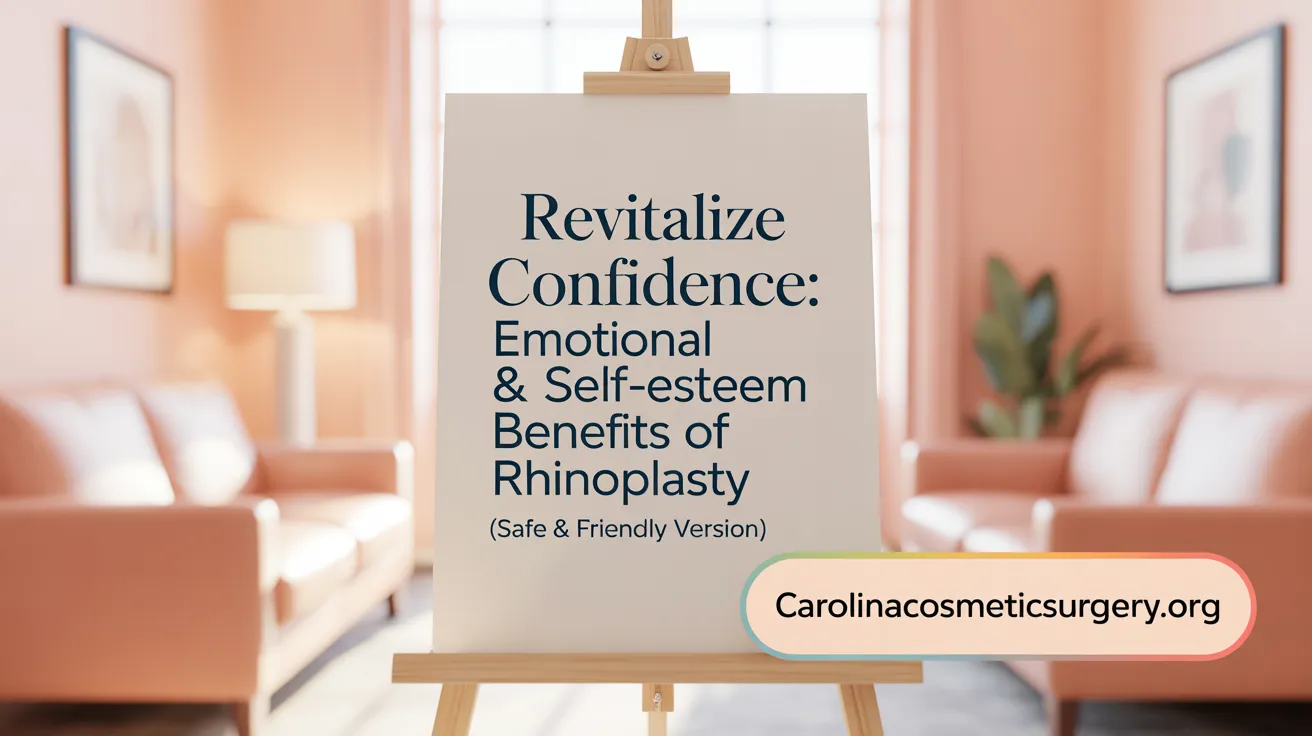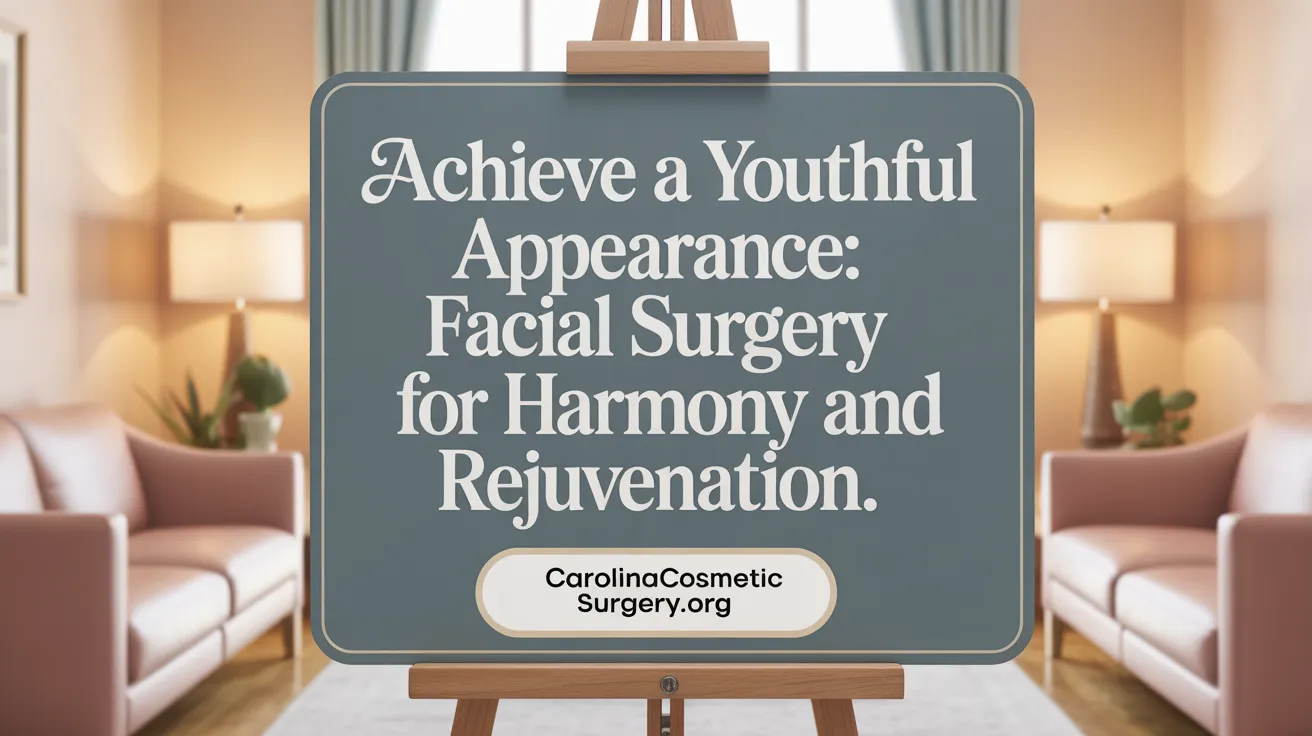Redefining Rhinoplasty: More Than a Cosmetic Procedure
Rhinoplasty, commonly known as a nose job, is often thought of solely as a cosmetic enhancement; however, its benefits extend far beyond improving appearance. This intricate surgical procedure not only reshapes the nose but also addresses vital functional and psychological aspects that contribute to overall health and well-being. From improving breathing and sinus function to enhancing self-esteem and combating signs of aging, rhinoplasty offers comprehensive advantages that make it a transformative experience. This article explores the multiple dimensions of rhinoplasty and its profound impact beyond aesthetics.
<!-- VIDEO:eyJsaW5rIjoiaHR0cHM6Ly93d3cueW91dHViZS5jb20vd2F0Y2g/dj1wRlVRQktEbVdsSSIsImltYWdlVXJsIjoiaHR0cHM6Ly9lbmNyeXB0ZWQtdnRibjAuZ3N0YXRpYy5jb20vdmlkZW8/cT10Ym46QU5kOUdjUXFBNDYwQnY4TmFNWEJzZWZnb0FnTi1IUTNIaWFYSm14dk9nIiwidGl0bGUiOiJMaXF1aWQgcmhpbm9wbGFzdHkgaXMgYSBnYW1lLWNoYW5nZXIgZm9yIHRob3NlIGNvbnNpZGVyaW5nIC4uLiIsInNuaXBwZXQiOiJMaXF1aWQgcmhpbm9wbGFzdHkgaXMgYSBnYW1lLWNoYW5nZXIgZm9yIHRob3NlIGNvbnNpZGVyaW5nIG5vc2UgcmVzaGFwaW5nLiBCZXlvbmQgdGhlIG9idmlvdXMgYmVuZWZpdCBvZiBhdm9pZGluZyBzdXJnZXJ5LCBkaWQgeW91IGtub3cgaXTCoC4uLiJ9 -->Understanding the Rhinoplasty Procedure and Its Comprehensive Benefits
What is the typical rhinoplasty procedure process, including recovery and benefits beyond appearance?
Rhinoplasty, commonly known as a nose job, involves reshaping the nose through surgical modifications of bone, cartilage, and skin. The procedure can be tailored for purely aesthetic reasons, functional improvements, or a combination of both. Surgeons typically perform the surgery using either open or closed approaches. In the open approach, a small external incision is made across the columella, providing direct access to underlying structures. The closed method involves incisions inside the nostrils, leaving no visible scars.
During the operation, adjustments include removing or reshaping tissue, correcting deformities, and sometimes combining with procedures like septoplasty to address breathing issues caused by a deviated septum. Post-surgery, patients usually wear a splint to support the nose and may experience swelling, bruising, and discomfort for several days. Most people can return home the same day, with some restrictions on strenuous activities during the initial recovery phase.
The recovery timeline varies, but most swelling and bruising decrease within the first 3 months. While subtle changes are visible early on, full results typically become apparent after about a year, with the nose settling into its new shape. Overall, rhinoplasty provides long-lasting, often permanent, improvements.
Beyond enhancing appearance, the procedure offers significant functional benefits. It can open blocked nasal passages, improve airflow, reduce sinus pressure, and alleviate breathing difficulties stemming from structural issues. This dual benefit improves quality of life by enabling easier breathing for activities like sleeping and exercise. The psychological boost from improving facial harmony and self-confidence further enhances overall well-being. Proper surgical planning and follow-up care are essential to achieving the best aesthetic and functional results, ensuring patient satisfaction and long-term health benefits.
Health Advantages: Breathing, Sinus Relief, and Medical Improvements

What are the health benefits of rhinoplasty, including improvements in breathing, sinus health, and relief of medical issues?
Rhinoplasty provides notable health benefits beyond mere cosmetic enhancement. One of its main advantages is improved airflow through the nose. By correcting structural problems such as a deviated septum or nasal valve collapse, the procedure makes breathing much easier and more efficient.
In addition, rhinoplasty can help resolve chronic sinus issues. By opening nasal passages and improving sinus drainage, it reduces the frequency and severity of sinus infections, congestion, and pressure.
The surgery also offers relief from sleep-related problems, such as snoring and obstructive sleep apnea (OSA). Better nasal airflow can lead to improved sleep quality and decrease health risks associated with poor sleep, including heart disease, depression, and diabetes.
Furthermore, reconstructive rhinoplasty can restore nasal function after trauma or illness, ensuring both appearance and health are preserved. It may also reduce the need for medications like decongestants, promoting long-term respiratory health.
Overall, rhinoplasty enhances not just facial aesthetics but also contributes significantly to respiratory function, sinus health, and overall well-being.
| Aspect | Benefit Description | Additional Notes |
|---|---|---|
| Breathing improvement | Corrects structural issues for easier, more efficient airflow | Includes fixing deviated septum and valve collapse |
| Sinus health | Opens nasal passages to improve drainage and reduce infection | Alleviates sinusitis and congestion |
| Medical issue relief | Restores nasal function after trauma or disease | May decrease reliance on medications |
| Sleep quality enhancement | Reduces snoring and sleep apnea for better rest | Improves overall health outcomes |
By addressing both aesthetic and functional concerns, rhinoplasty supports long-term health and enhances quality of life, making it a valuable procedure for many individuals.
Functional Enhancements: Restoring Nasal and Respiratory Efficiency
How does rhinoplasty enhance nasal and respiratory function?
Rhinoplasty can do more than improve the appearance of your nose—in many cases, it significantly boosts nasal and respiratory health. The procedure addresses common structural issues that block airflow, such as a deviated septum, enlarged turbinates, or nasal valve collapse.
One common functional benefit is septoplasty, which straightens a crooked septum to open up the nasal passages. This correction reduces nasal obstruction and enhances airflow, making breathing easier both day and night.
Additionally, reductions in turbinates—structures inside the nose that help humidify and filter air—can be performed to prevent nasal congestion and improve comfort.
To support nasal valve stability, surgeons often use cartilage grafts, such as spreader grafts, to keep these openings open. These techniques help maintain a clear and unobstructed airway, which is crucial for proper breathing.
When carefully performed, functional rhinoplasty enhances airflow, leading to improved breathing during daily activities and sleep. Many patients experience relief from nasal blockages, better sleep quality, and decreased snoring.
Evidence from both imaging studies and patient reports demonstrates that these surgical interventions effectively restore nasal function. Proper healing and subtle structural adjustments promote ongoing improvements, helping patients breathe more freely, sleep soundly, and enjoy better overall nasal health.
| Aspect | Technique | Benefit | Additional Details |
|---|---|---|---|
| Nasal passage correction | Septoplasty | Straightens deviated septum | Opens up airflow, improves breathing |
| Turbinate reduction | Turbinate surgery | Reduces enlarged turbinates | Less nasal congestion |
| Nasal valve support | Cartilage grafts | Keeps nasal valves open | Prevents airway collapse |
| Airflow enhancement | Spreader grafts | Widen internal nasal passages | Improves overall nasal patency |
Overall, functional rhinoplasty effectively combines structural corrections with aesthetic refinements. These improvements lead to easier breathing, enhanced sleep, and a better quality of life, especially for those suffering from persistent nasal airway issues.
Psychological and Emotional Transformations Following Rhinoplasty

What psychological and emotional benefits are associated with rhinoplasty, including effects on self-esteem and overall well-being?
Rhinoplasty often leads to profound psychological and emotional improvements for many individuals. The surgery can significantly boost self-esteem by enhancing facial harmony and correcting nasal deformities that may have caused dissatisfaction or negative self-image.
Beyond aesthetics, the procedure can improve overall mental health. Patients frequently report reductions in feelings of depression and anxiety, especially when nasal issues previously contributed to social withdrawal or emotional distress. For those with nasal deformities or breathing difficulties, rhinoplasty can restore confidence and encourage more active social participation.
The positive psychological effects extend to social interactions, where improved self-confidence can lead to increased social engagement and career opportunities. Many experience a sense of relief and happiness post-surgery, which enhances overall well-being and quality of life.
However, it is important to note that psychological readiness and realistic expectations play a vital role. Some individuals with underlying psychological issues may need additional support to ensure satisfaction and prevent disappointment.
In summary, the psychological benefits of rhinoplasty include enhanced self-esteem, reduction in emotional distress, and improved social confidence. Most patients notice these positive changes within months following surgery, contributing to a more fulfilling and healthier emotional state.
| Aspect | Influence | Additional Notes |
|---|---|---|
| Self-esteem boost | Improved facial harmony enhances confidence | Changes often perceived as restoring a youthful look |
| Emotional well-being | Reduction in depression, anxiety, and social anxiety | Especially for those with nasal deformities or breathing issues |
| Social confidence | Greater ease in social interactions | Leads to better personal and professional relationships |
| Mental health | Overall improvements, including decrease in distress levels | Reinforces positive body image and self-acceptance |
| Long-term impact | Sustained psychological benefits post-recovery | May last a lifetime with proper care and realistic goals |
Overall, the psychological and emotional gains from rhinoplasty contribute significantly to enhancing a patient's overall quality of life, making it more than just a cosmetic procedure.
Anti-Aging and Facial Harmony: The Rejuvenating Power of Rhinoplasty

How does rhinoplasty contribute to anti-aging effects and facial harmony?
Rhinoplasty plays a significant role in reducing signs of aging and enhancing facial balance. As individuals age, nasal features such as the nasal tip may droop, and the bridge can develop irregularities or a dorsal hump, which can make the face look older or less vibrant.
By addressing these age-related nasal changes, rhinoplasty helps restore a more youthful nasal contour. Techniques include lifting the nasal tip and smoothing or refining the nasal profile, which not only rejuvenates the nose but also revitalizes the entire face.
Improving the shape of the nose enhances facial symmetry, a critical factor in perceived attractiveness and youthfulness. A harmonious nose that complements other features like the eyes and chin creates a balanced, natural look.
The refined nasal shape enhances how light reflects off the face, contributing to a more vibrant and youthful appearance. Many patients report a refreshed, alert look, which significantly impacts social and professional interactions.
Research and expert opinions confirm that aesthetic rhinoplasty can positively influence perceived age, with many patients appearing several years younger after surgery. By rejuvenating the nose, rhinoplasty acts as a facial anti-aging treatment, creating harmony and vitality that radiates across the face.
Overall, this procedure not only enhances aesthetic appeal but also boosts confidence, making individuals look and feel younger. It is a strategic tool for facial rejuvenation, emphasizing key nasal features that support a youthful, balanced appearance.
Longevity and Structural Integrity: Long-Term Outcomes of Rhinoplasty
 Rhinoplasty results tend to be long-lasting because they involve structural modifications to the bone and cartilage components of the nose. Once healed, these changes usually become stable as the nasal bones and cartilages fuse and form a new framework. This stability underpins the durability of the aesthetic and functional improvements achieved.
Rhinoplasty results tend to be long-lasting because they involve structural modifications to the bone and cartilage components of the nose. Once healed, these changes usually become stable as the nasal bones and cartilages fuse and form a new framework. This stability underpins the durability of the aesthetic and functional improvements achieved.
However, the aging process can subtly influence the nose over time. As skin, ligaments, and tissues thin and loosen with age, some patients may notice minor shifts or changes in their nasal shape decades after surgery. Factors such as skin elasticity and overall facial aging play a role in these modifications.
Reinforcing the nasal structure during surgery, especially through techniques like cartilage grafting, enhances long-term support and reduces the risk of deformities or collapse. Such measures are particularly important inRevision rhinoplasty or cases with weakened structural support.
External factors also impact long-term outcomes. Trauma, cigarette smoking, and prolonged sun exposure can accelerate tissue deterioration or alter surgical results.
In general, with precise surgical technique and healthy lifestyle choices, rhinoplasty outcomes remain stable over a lifetime. Nonetheless, some patients may pursue additional procedures later to maintain or refine their appearance as natural aging progresses.
| Aspect | Description | Additional Notes |
|---|---|---|
| Result Durability | Results are stable due to bone and cartilage fusion | Maintains initial shape for most of life |
| Aging Effects | Skin thinning and tissue loosening | May cause minor surface changes over decades |
| Structural Reinforcement | Use of grafts for support | Prevents deformity or collapse |
| External Impact | Trauma, environmental factors | Can alter long-term appearance |
| Long-term Satisfaction | Generally high | Some may seek revisions for optimal aging adaptation |
Understanding these aspects helps set realistic expectations for long-term results. Proper surgical planning and healthy living are essential to sustain the aesthetic and functional benefits of rhinoplasty over many years.
Beyond Looks: Rhinoplasty’s Lasting Impact on Health and Confidence
Rhinoplasty stands as a remarkable procedure that transcends the boundaries of cosmetic enhancement to offer tangible health, functional, and psychological benefits. From improving breathing and alleviating sinus problems to boosting self-esteem and harmonizing facial features, its multifaceted advantages contribute to a better quality of life. The durability and adaptability of results ensure that patients enjoy these benefits well into the future, often noticing rejuvenating effects with age. As surgical techniques continue to advance, rhinoplasty remains a powerful tool not only for aesthetic refinement but also for enhancing overall well-being, making it a compelling choice for those seeking holistic improvements beyond appearance.
References
- Rhinoplasty (Nose Job): Surgery, Recovery, Before & After
- Rhinoplasty
- Top 5 Benefits of Cosmetic Rhinoplasty Beyond Aesthetics
- Five Benefits Of Rhinoplasty To Enhance Your Appearance
- Surprising Benefits of Rhinoplasty | Lakeshore Ear, Nose & ...
- Cosmetic Surgery Benefits: Beyond Beauty and into Health
- Enhancing Both Aesthetics and Breathing for a Better You
